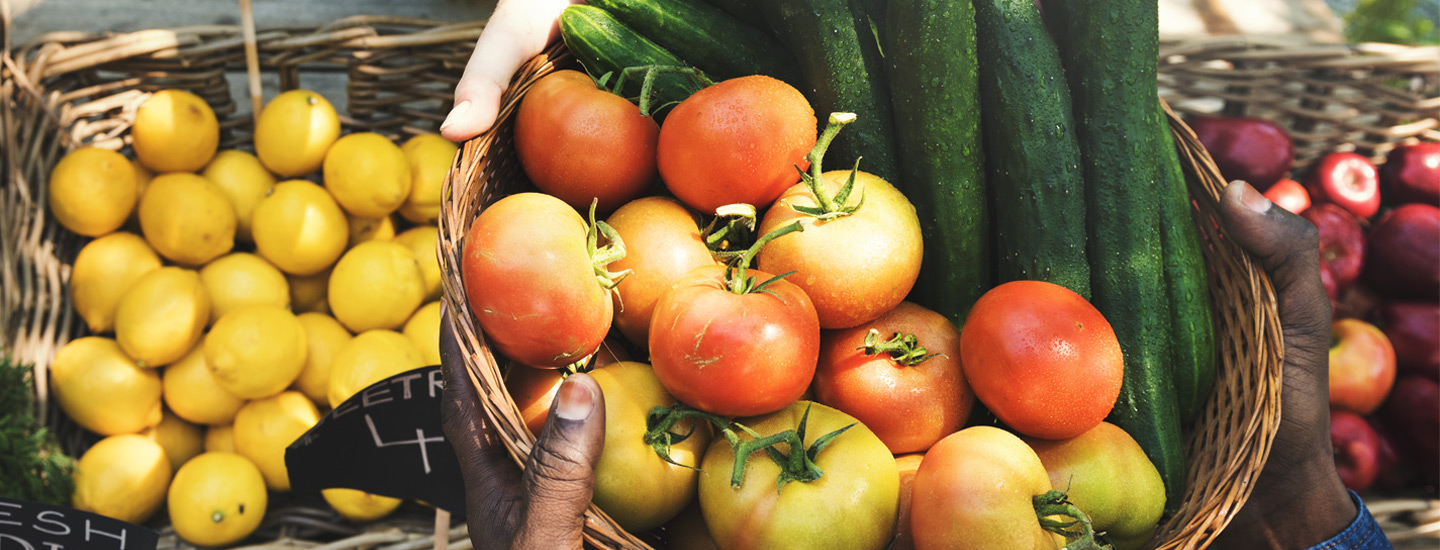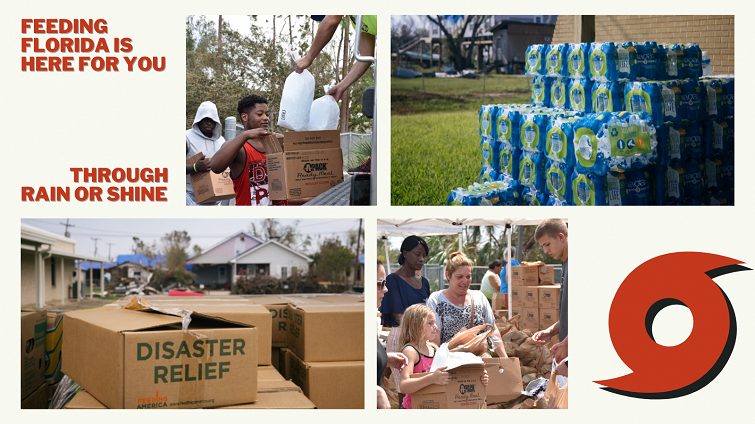As the only network capable of ramping up 300% during times of natural disaster, Feeding Florida’s food banks have the capacity and supplies needed to provide aid to people across the state. Through our partnership with Division of Emergency Management, we can assist the State Emergency Response Team immediately, providing life-changing supplies such as pallets of water, ready to eat meals, first aid and more.
“FDEM (Florida Division of Emergency Management) relies on Feeding Florida as well as many other organizations to assist the SERT (State Emergency Response Team) when responding and recovering from emergencies and disasters,” says Patricia Broadway of the State Emergency Response Team. “Feeding Florida’s critical role in getting disaster survivors fed is essential to our recovery efforts.”
Feeding Florida’s disaster relief begins long before a hurricane makes landfall. Our network closely monitors and adheres to the warnings provided the National Weather Service and takes action steps prior to landfall to ensure each of our food banks is stocked with emergency relief supplies. Once a storm begins impacting the state, Feeding Florida’s Supply Chain Analyst and President of FSC Concepts, LLC., Andy Kimpel, communicates with FDEM & ESF6 to begin assessing the needs of each county and engages the local Feeding Florida food bank in the area. Our food banks then deploy their trucks full of MREs and water to the impacted areas where other relief organizations join us in distributing the supplies.
“Coordinating with the ESF6 team ensures that we are working in conjunction with all state entities and partners to provide the best care possible,” says Andy. Feeding Florida and FDEM work together to focus on weather reports and potential impact sites, as well as assessing all food assets in the immediate impact area. This then shifts to how to best mobilize other materials just beyond the impact zone in order to provide optimal support for citizens as the event occurs.
Food is most often deployed to specific locations per missions assigned by ESF6 via WebEOC, the online tool used by all state entities to prioritize support in an emergency. This helps ensure that food is distributed to the proper location without overlapping with other food partners and/or food products. Trucks are selected based on the type of unloading facilities that may be available at the site. Each facet of the supply chain has been set up to maximize efficiency of getting food to those in need.
“ESF6’s partnership with Feeding Florida Network is the catalyst to our organization,” says Patricia Broadway. “ESF6/SERT depends on Feeding Florida and the resources they provide to Florida’s communities.”
Thanks to our partnership with FDEM, the network is capable and prepared to provide relief to our state when they need us most. To begin your hurricane preparedness plan, visit: https://www.floridadisaster.org/planprepare/


